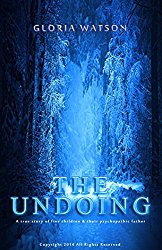ABUSE AND SURVIVAL
I wrote a recent post about children who kill and how most of the books in
this category are actually works of non-fiction. The sad reality is; when dealing with a
subject such as abuse and survival, the same thing is true. I found so many heart-wrenching (non-fiction) stories out
there about children who were abused and had to learn how to survive. Interesting enough, some of those book topics
actually end up overlapping; that is to say, some of those books about children
who kill are also about children who were abused.

This is of special interest to
me, having written a work of fiction about a child abuse victim who resorts to
killing. Skipping
Childhood: A Novel (From Abused Foster
Child to Adolescent Serial Killer) has many of the very same elements that
those non-fiction books have. The reason
for this is because Skipping Childhood is
a true story of survival, even though many elements of the novel is
fiction. We have all discovered by now
that it is not unusual to find truth in fiction, especially when it comes to survival
stories.
In the
publishing industry, when a book is based on a true story, presumably, the
events that take place are true. My book
has an overwhelming amount of content that is inspired by true events, which is not necessarily the same
thing. While I never knew any 12
year-olds who killed anyone, I’ve known many, if not all of the characters in
my book. I’ve known their lives and
their struggles and their challenges, and many of them, I’ve experienced
first-hand. So as an author, I’m able to
write about abuse and survival with a sense of credibility, even if I use my
imagination when writing about murder.
Difficult
to Write and Read
Clearly, some topics are much
more difficult to write and even to read.
I came across two books yesterday that I wanted to mention. Both are based on true stories about child abuse
and survival. No
More Pain Kindle Edition is written by Paige Green. This is one that I purchased and plan to
read. I’ll also be posting a review when
I’m done.
The other book I came across
is The
Undoing: The uncertain nights of the Peterson children Kindle Edition by
Gloria Watson. This one I won’t be
reading, and I mean no disrespect to the author. One of the statements made in the book
description is that this book is “not for
the faint of heart”. That rules me
out. I found it hard to even read the
description of what both books were about, let alone to dive into something I
know will be disturbing.
The reason I chose to buy No More Pain is because the author did a
good job of making me feel saddened by the topic, but curious to see what
happens. I know the content is delicate,
but I don’t get put off in the way the author leads me to believe it will be
presented. I think this is an important
aspect when writing about child abuse and survival, whether you write fiction
or non-fiction. I appreciate the candor and foresight Ms.
Watson (author of the second book) showed. She gave us a warning about her book and certain readers need to recognize that
her warning is for them (like me). This
helps eliminate the chance of reading a book and giving it a poor review
because your conscious was offended or it was too graphic to handle.
Writers who are not sensitive to
this issue can find themselves being viewed in a questionable way. I came across one title about a sexually
abused child, and the description almost read like one of the erotica books I’ve
reviewed in the past. There should be no
blurred lines when it comes to writing about sexual child abuse and writing about
an adult sexual encounter. The language,
tone, and everything else should be distinctively different. Failing to recognize this fact will put off a
lot of readers, as well it should.
Less
is More
The expression “less is more” has
never been more fitting than in the above conversation. I think authors should apply it when writing
the necessary scenes and dialogue in stories about abuse and survival (fiction
or non-fiction). Readers who want to
read and understand these types of tragic stories don’t necessarily feel the
need for all the gritty details and language surrounding violent and sexual
acts. I personally tried to keep this point
in mind when I wrote Skipping Childhood.
The topic is sensitive enough without adding all the shock value of
horrific scenes and dialogue.
I welcome you to read Skipping
Childhood: A Novel (From Abused Foster
Child to Adolescent Serial Killer) and see what you think about this point.





